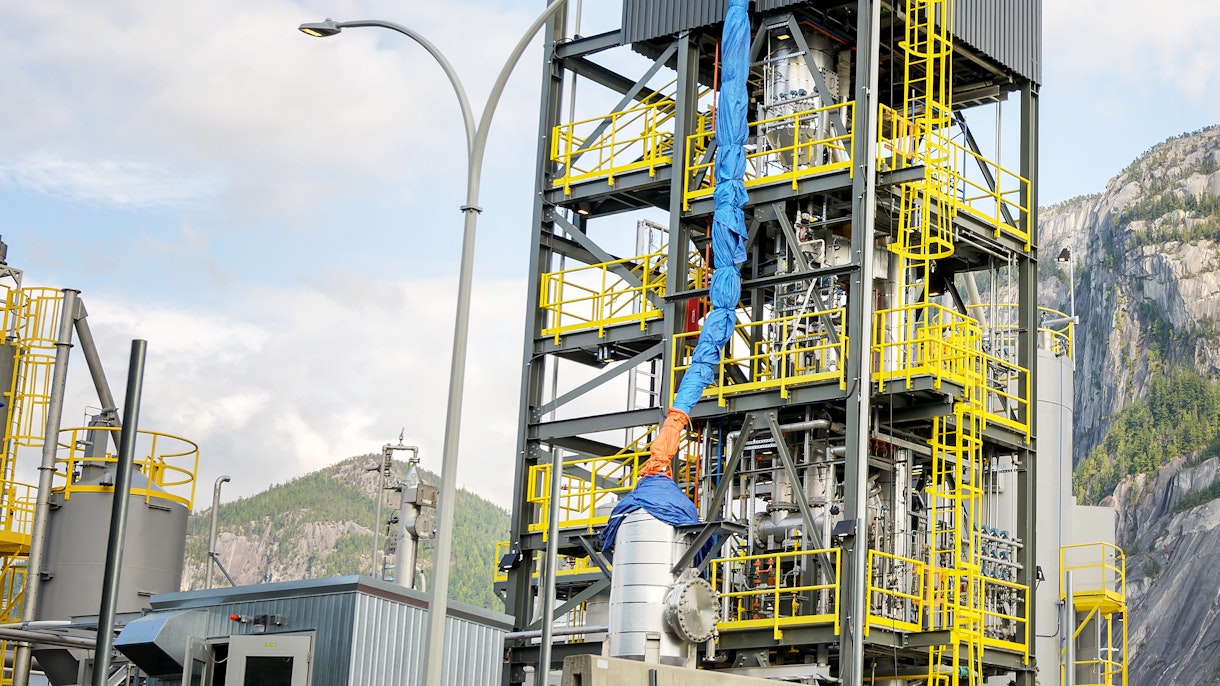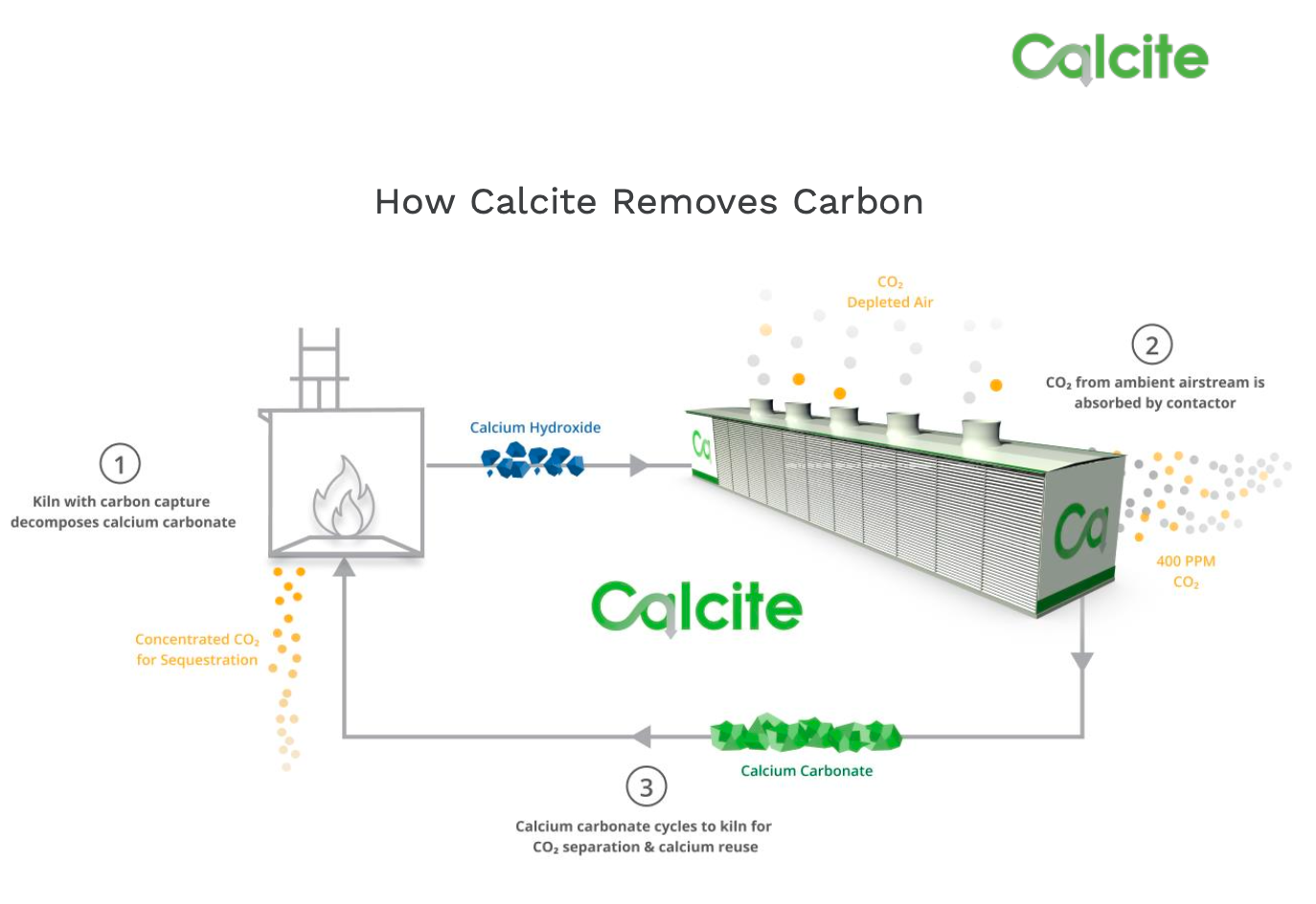
As the world grapples with rising carbon emissions and unprecedented global temperatures, direct air capture (DAC) technology is emerging as a critical tool in the fight against climate change.
With record-high emissions reported in 2024 and temperatures exceeding the 1.5°C tipping point for 11 months, the urgency to act has never been greater.
While controversial in some circles, DAC startups are gaining traction by promising scalable solutions that can remove carbon directly from the atmosphere.

>> In Other News: Plug Power Boosts Liquidity with $30 Million Federal Investment Tax Credit Transfer
Direct Air Capture: A Growing Necessity
Direct air capture is a method of extracting carbon dioxide directly from the open air.
Unlike traditional carbon capture methods, which often focus on emissions from specific sources like power plants, DAC seeks to address the broader problem of legacy emissions already circulating in the atmosphere.
Some companies use captured carbon to replace industrial materials derived from petroleum, while others focus on permanent sequestration by storing the carbon underground.
Despite its promise, DAC has faced criticism for being energy-intensive, costly, and complex to scale.
Yet, startups around the world are working to tackle these challenges.
Companies like 8 Rivers are pioneering more efficient, less energy-intensive solutions that aim to make DAC a viable option for large-scale adoption.
Innovators in the Space
8 Rivers, a clean technology firm, has developed an innovative DAC system called Calcite.
This system uses calcium hydroxide to capture carbon without relying on energy-intensive fans or filters, significantly reducing energy consumption and operational costs.

“You are seeing a recognition globally of the importance of DAC to achieving long-term climate goals,” said Jennifer Diggins, vice president of public affairs at 8 Rivers. “In order to actually reach the goals that are set forth in the Paris Accord — net zero by 2050 — you have to have a way to get rid of the legacy emissions that are in the air today.”
The company’s technology has attracted attention and support, including funding from the U.S. Department of Energy’s $3.5 billion Regional Direct Air Capture Hubs program.
The program is designed to demonstrate DAC technologies at commercial scale and establish infrastructure capable of removing at least 1 million metric tons of carbon dioxide annually.
The Role of Major Companies
Tech giants like Google, Microsoft, Meta, and Salesforce are also stepping into the space. These companies are investing heavily in DAC initiatives to support the scaling of this critical technology.
Their involvement not only provides much-needed capital but also signals the growing recognition of DAC's importance in meeting climate goals.
“The only way that is going to happen is to see more companies like the Microsofts, the Metas, et cetera, investing in this space and being willing to have higher risk tolerance to get these technologies where they need to be,” Diggins said.
Related: Carbon Removal Tech Startups Leading the Way in Sustainability
Government Support is Key
Government funding and incentives play a pivotal role in advancing DAC technology. Diggins highlighted that federal support is essential for de-risking early-stage technologies and bringing down costs.
She pointed to the historical precedent of government backing for other energy innovations like wind and solar power, which were similarly cost-prohibitive in their infancy.
The Biden administration has allocated significant resources to DAC, including an additional $1.8 billion in funding announced in late 2024. These funds aim to establish a nationwide network of DAC hubs and ensure the industry’s scalability in the coming years.
“It’s like any nascent technology,” Diggins said. “If you don’t have those federal incentives to help you drive down the cost while you de-risk the technology, you’re never going to get there.”
Overcoming Cost Barriers
One of the main challenges facing DAC is the high cost of capturing carbon, which currently ranges from $250 to $600 per metric ton. Reducing these costs is critical for the technology to become a practical solution.
Startups like 8 Rivers are working to lower costs through technological innovation, but additional investments from both private and public sectors are necessary to accelerate progress.
The Department of Energy’s hub model, which fosters collaboration between project developers and businesses, is an example of how government programs can help bridge this gap.
The Road Ahead
While challenges remain, the future of DAC looks promising. With support from private companies, government incentives, and innovative startups, the industry is on a trajectory toward meaningful impact.
“The Biden administration, and their support, and the funds that they have made available are truly game-changing,” Diggins said. “Like any technology, the next few years are going to be absolutely critical to deployment. But the innovation that you are seeing at a company level and the passion you’re seeing around this is really significant, and the industry is growing and thriving.”
Direct air capture may not be a silver bullet for climate change, but it’s clear that its role in addressing legacy emissions is becoming increasingly important.
With major players and fresh ideas entering the space, the potential for DAC to transform the fight against climate change is significant.
Subscribe to the newsletter
Daily decarbonization data and news delivered to your inbox
Follow the money flow of climate, technology, and energy investments to uncover new opportunities and jobs.
Latest issues
-
How Direct Air Capture Could Drop 75% in Cost
Inside This Issue 💨 How Direct Air Capture Could Drop 75% in Cost ⚡ Cache Power Advances 30 GWh Compressed Air Energy Storage Project In Alberta 🪨 Canada Nickel And The University Of Texas At Aust...
-
EPA Rule Unlocks $20B Biofuels Boom: The Decarbonization Players Who Gain
Inside This Issue 🌾 EPA Rule Unlocks $20B Biofuels Boom: The Decarbonization Players Who Gain ⛏️ DMS Georgia: World’s First Deep Mine Carbon Storage 💧 Dirty Water Boosts Prospects for Clean Hydrog...
-
Inside the Power Plant Conversion Everyone’s Arguing About
Inside This Issue ⚡ In Controversial Move, LADWP Says It Will Shift Its Largest Gas Power Plant to Hydrogen 🌎 NorthX Catalyzes the Rise of Canada's Carbon Removal Industry 🤝 Elemental Clean Fuels ...
Company Announcements
-
CHAR Tech Invited To Join The Canadian Iron & Steel Energy Research Association (CISERA)
TORONTO, Oct. 29, 2025 (GLOBE NEWSWIRE) -- CHAR Technologies Ltd. ("CHAR Tech" or the "Company") (TSXV:YES), a leader in sustainable energy solutions, is pleased to announce that it has been invite...
-
Scientists May Have Found a Near-Limitless Energy Source That Could Power Earth Forever
The Midcontinent Rift is an ancient crack in the ground that started to open across the middle of North America about 1.1 billion years ago. Over time, this rift became home to magma, water, metals...
-
ICAO General Assembly 2025 Reaffirms Aviation’s Commitment to Net-Zero by 205
The 42nd International Civil Aviation Organization (ICAO) General Assembly, held in Montreal in October 2025, made waves with pivotal decisions concerning the future of aviation sustainability. As ...
-
University of Alberta-led research highlights emerging hydrogen storage potential at Robinsons River Salt Dome November 04, 2025 08:00 ET | Source: Vortex Energy Corp. VANCOUVER, British Columbia...